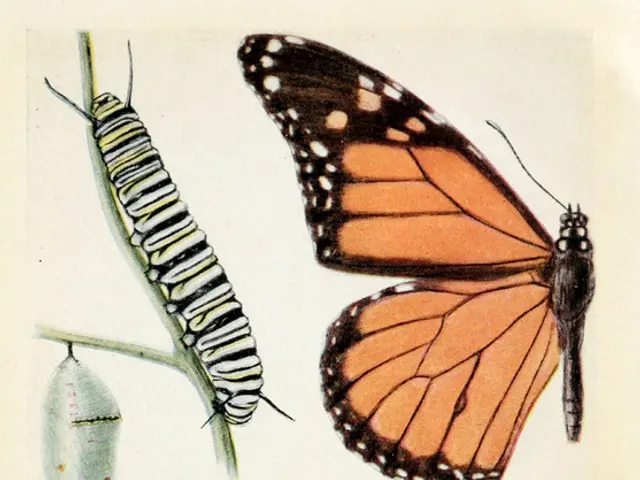Struggling with Knee Discomfort During Exercises? A Specialist Reveals Root Causes, Signs, And Protective Strategies for Runners, Sportspersons, and Fitness Enthusiasts
Take a Squat, Feel a Twinge? Jumper's Knee Could Be the Issue
Hey there! Ever felt a twinge below your kneecap when doing squats, climbing stairs, or taking a brisk walk? Don't brush it off as simple muscle fatigue. It might be Jumper's Knee, and here's the lowdown on this pesky condition.
Jumper's Knee: A New Addition to Your Fitness Woes
Ever heard of Patellar Tendinitis? That's what we're talking about. Dr. Ashis Acharya, a seasoned Orthopaedics and Sports Medicine expert at Sir Ganga Ram Hospital in New Delhi, explains it like this: "Jumper's Knee, or Patellar Tendinitis, is an inflammation or injury to the patellar tendon — the tissue connecting your kneecap to your shinbone. This tendon plays a crucial role in straightening your leg, jumping, running, and absorbing shock from your movements." And guess what? No amount of professional athleticism protects one from it. Office workers, school students participating in sports, and fitness enthusiasts alike are just as likely to fall prey.
Why's Knee Pain becoming So Common?
According to Dr. Ashis, our twenty-first-century lifestyles invite trouble for our muscles and joints. "The inconsistency between sudden bursts of high-impact activities and hours of sedentary sitting causes strain on our connective tissues like tendons," he says. Here are some factors he pointed out:
- Skipping proper warm-ups and stretching before intense workouts.
- A sudden increase in physical activity, especially repetitive jumping and squatting.
- Tight hamstrings and quads, adding unnecessary pressure on the patellar tendon.
- Weak core and leg muscles that reduce shock absorption.
- Exercising on hard surfaces and wearing improper footwear.
Dr. Ashis shared some scary insights: "By the time people walk into my clinic, they are often struggling with day-to-day moments like getting out of the car or climbing stairs."
Watch Out for These Warning Signs
Unlike sports injuries resulting from a specific accident, Jumper's Knee develops over time. Here are some telltale signs to watch out for:
- Pain below the kneecap when bending your knees.
- Tenderness and swelling around the joint.
- Stiffness following longer periods of inactivity or sitting.
- Discomfort while walking uphill, running, and taking stairs.
- Pain after workout sessions.
Protecting Your Knees: Your Game Plan
Brace yourself! The good news is that early diagnosis and the right care can reverse the damage. Here's your battle plan:
- Strength training for quads, glutes, hamstrings, and calves becomes essential to protect the tendon.
- Regular stretching and foam rolling to keep muscles flexible.
- Shifting to low-impact exercises like cycling and swimming during recovery.
- Rest and ice to manage inflammation.
- Orthopaedic examination and physiotherapy if the pain persists.
Remember, pain isn't a sign of progress, it's a red flag that something isn't right. Pain while jumping or running isn't just a fitness hurdle; it could be your body trying to alert you to Jumper's Knee. Act early to avoid long-term discomfort and even surgery. Your leaps forward shouldn't come at the cost of a step back in health.
Emerging research suggests that lower back dysfunction may be linked to patellar tendon issues. So, second-guess that pain and invest in a full-body biomechanical assessment for holistic wellbeing. Your knees (and your future self) will thank you!
- Sports like football, basketball, hockey, golf, and even mixed-martial-arts can lead to Jumper's Knee due to high-impact movements.
- The science behind Jumper's Knee shows that the patellar tendon, crucial in activities like running and absorbing shock, can become inflamed or injured.
- Overlooking the symptoms of Jumper's Knee, such as pain below the kneecap and discomfort during running or stair climbing, could lead to long-term discomfort or potentially surgery.
- In the quest for fitness and wellness, it's important to understand that pain while jumping or running could be Jumper's Knee, not just a phase of growth in health-and-wellness or fitness-and-exercise.
- Adding strength training for quadriceps, hamstrings, glutes, and calves, as well as regular stretching, to your routine can help protect the patellar tendon and prevent Jumper's Knee.
- Fitness enthusiasts are just as susceptible to Jumper's Knee as professional athletes, reminding us that no one is immune to sports-related injuries.
- Proper footwear and exercising on soft surfaces can help minimize stress on the patellar tendon, reducing the risk of developing Jumper's Knee.
- Situations like the inconsistency between sudden bursts of high-impact activities and extended periods of inactivity can lead to Jumper's Knee, emphasizing the importance of a balanced fitness routine.
- Maintaining good core and leg muscle strength can help reduce the strain on the patellar tendon, thereby preventing Jumper's Knee.
- Beyond regular sports therapy and orthopaedic examination for Jumper's Knee, broader health considerations like lower back dysfunction might also play a role, calling for full-body biomechanical assessments for comprehensive wellbeing.







